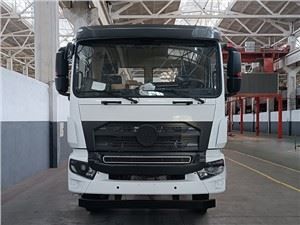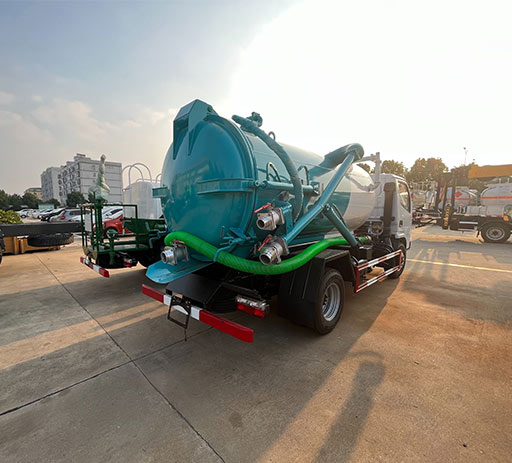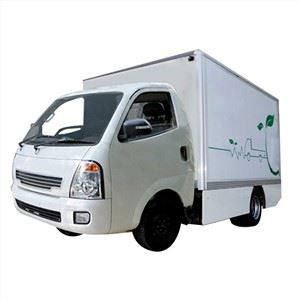Different Types of Tanker Trailers: An In-Depth Guide
Introduction
Tanker trailers are vital components in various industries, from transporting liquids to hazardous materials. Understanding the different types of tanker trailers is crucial for businesses to optimize logistics, ensure safety, and comply with regulations. This article provides a comprehensive overview of the various types of tanker trailers available, their applications, and important considerations for selecting the right one for your needs.
1. What is a Tanker Trailer?
1.1 Definition
A tanker trailer is a specialized trailer designed to carry liquids, gases, or even solids in bulk. These trailers are typically connected to semi-trucks, making them essential tools for transporting various substances efficiently.
1.2 Purpose and Use
Tankers are utilized across multiple sectors including food and beverage, chemicals, oil and gas, and more. Their design often includes insulation and safety features to ensure the contents are transported safely.
2. Types of Tanker Trailers
2.1 Common Types of Tanker Trailers
Tankers come in various designs according to their specific applications. Below are some of the most common types:
2.1.1 Dry Bulk Tankers
These tankers are designed to transport dry, bulk materials such as grains, powders, and pellets. They often feature pneumatic systems to load and unload the cargo easily.
Features
- Lightweight construction
- Pneumatic discharge systems
- Multiple compartments for different materials
Example Uses
Used for transporting flour, cement, and agricultural products.
2.1.2 Liquid Tankers
Liquid tankers are designed to transport liquids like water, chemicals, or milk. They may feature insulation to maintain temperature and often have specific measures for safe transportation of hazardous materials.

Features
- Insulation for temperature regulation
- Suction and discharge systems
- Multiple compartments or baffles for liquid slosh reduction
Example Uses
Utilized for transporting petroleum products, chemicals, or food-grade liquids.
2.1.3 Fuel Tankers
Fuel tankers are engineered specifically for transporting petroleum fuels. They have robust safety features to mitigate risks associated with flammable liquids.
Features
- Double-walled construction
- Vapor recovery systems
- Specialized pumps and valves
Example Uses
Used for transporting gasoline, diesel fuel, and jet fuel.
2.1.4 Chemical Tankers
These tankers are designed for transporting hazardous liquids and chemicals. They require specialized materials to prevent reactions with the cargo.
Features

- Chemical-resistant lining
- Segregated compartments
- Pressure and temperature monitoring systems
Example Uses
Commonly used for transporting acids, solvents, and other hazardous chemicals.
2.1.5 Food Grade Tankers
Food grade tankers are specialized to transport food products, ensuring compliance with health and safety regulations.
Features
- Stainless steel construction
- Sealed tank designs to prevent contamination
- Easy to clean and sanitize
Example Uses
Transporting milk, juice, and other perishable beverages.
2.1.6 Vacuum Tankers
Vacuum tankers are designed to transport liquids and sludges, often from waste disposal sites or industrial settings. They utilize a vacuum system to load and unload materials.
Features
- Powerful vacuum pumps
- Special valves for safe unloading
- Robust design for heavy-duty use
Example Uses
Utilized for transporting sewage, sludge, and other liquid waste products.
3. Key Considerations When Choosing a Tanker Trailer
3.1 Load Capacity
The load capacity of a tanker trailer is crucial in determining its suitability for specific transport needs. Ensure that the trailer can handle the weight of the cargo without compromising safety.
3.2 Safety Features

Safety must be a priority when choosing a tanker trailer. Look for features like emergency shut-off valves, pressure relief valves, and containment systems to mitigate risks.
3.3 Regulations and Compliance
Understanding local and federal regulations for transporting specific materials is essential. Ensure that the chosen tanker trailer meets all compliance requirements.
3.4 Maintenance and Durability
Durability plays a significant role in long-term operational costs. Look for tankers built from high-quality materials that require minimal maintenance.
3.5 Type of Cargo
Your choice of tanker should align with the type of cargo you plan to transport. Different materials may require specific designs or features for safe transport.
3.6 Cost Considerations
Final decisions may often come down to budget. While investing in a higher-quality trailer can save costs in the long run, it is essential to weigh your options carefully.
4. Practical Tips for Operating Tanker Trailers
4.1 Proper Loading Techniques
Always adhere to loading protocols to ensure weight distribution remains even. Improper loading can lead to dangerous driving conditions.
4.2 Driver Training
Investing in driver training specifically for handling tanker trailers is crucial. Factors like trailer sway, turning radius, and braking distance differ from standard trailers.
4.3 Regular Inspections
Conducting regular inspections of your tanker trailer can help identify potential issues before they lead to costly breakdowns. Focus on brakes, tires, and connections.
4.4 Understanding Weather Conditions
Driving conditions can change drastically in adverse weather. Be prepared to adjust driving patterns to ensure safety and maintain control of the trailer.
4.5 Emergency Preparedness
Ensure your team is trained in emergency response techniques specific to the cargo you are transporting. Carry appropriate emergency equipment in your vehicle.
5. The Future of Tanker Trailers
5.1 Innovations in Design
New technologies, such as lightweight materials and better insulation methods, are enhancing the efficiency and safety of tanker trailers.
5.2 Eco-Friendly Solutions
With increasing environmental regulations, manufacturers are focusing on producing eco-friendly tanker trailers that reduce carbon footprints and comply with emission standards.
5.3 Automation and Smart Technologies
Future tanker trailers may incorporate automated loading systems and smart technology for monitoring cargo conditions in real-time.
6. Conclusion
Tankers are integral to a wide range of industries, and understanding the different types can greatly impact efficiency and safety. By considering the various aspects of tanker trailers discussed in this article, businesses can make informed decisions that align with their operational requirements.
FAQs
1. What is the maximum weight capacity of tanker trailers?
The weight capacity varies by design and state regulations, but many can carry between 20,000 to 35,000 pounds of liquid cargo.
2. How are liquid tanker trailers unloaded?
Liquid tankers are usually equipped with pumps and valves that facilitate the safe and efficient unloading of their contents.
3. What materials are used in constructing tanker trailers?
Tanker trailers are often made from stainless steel, aluminum, or carbon steel, depending on the type of cargo they carry.
4. Are there specific regulations for transporting hazardous materials?
Yes, there are strict regulations governing the transport of hazardous materials, including safety requirements, labeling, and driver training.
5. How often should tanker trailers undergo maintenance checks?
It is best practice to conduct maintenance checks every 6-12 months, or more frequently, depending on usage and the conditions under which they operate.
6. Can tanker trailers be customized for specific needs?
Yes, many manufacturers offer customization options to tailor tanker trailers to specific operational requirements, including size, compartments, and safety features.
